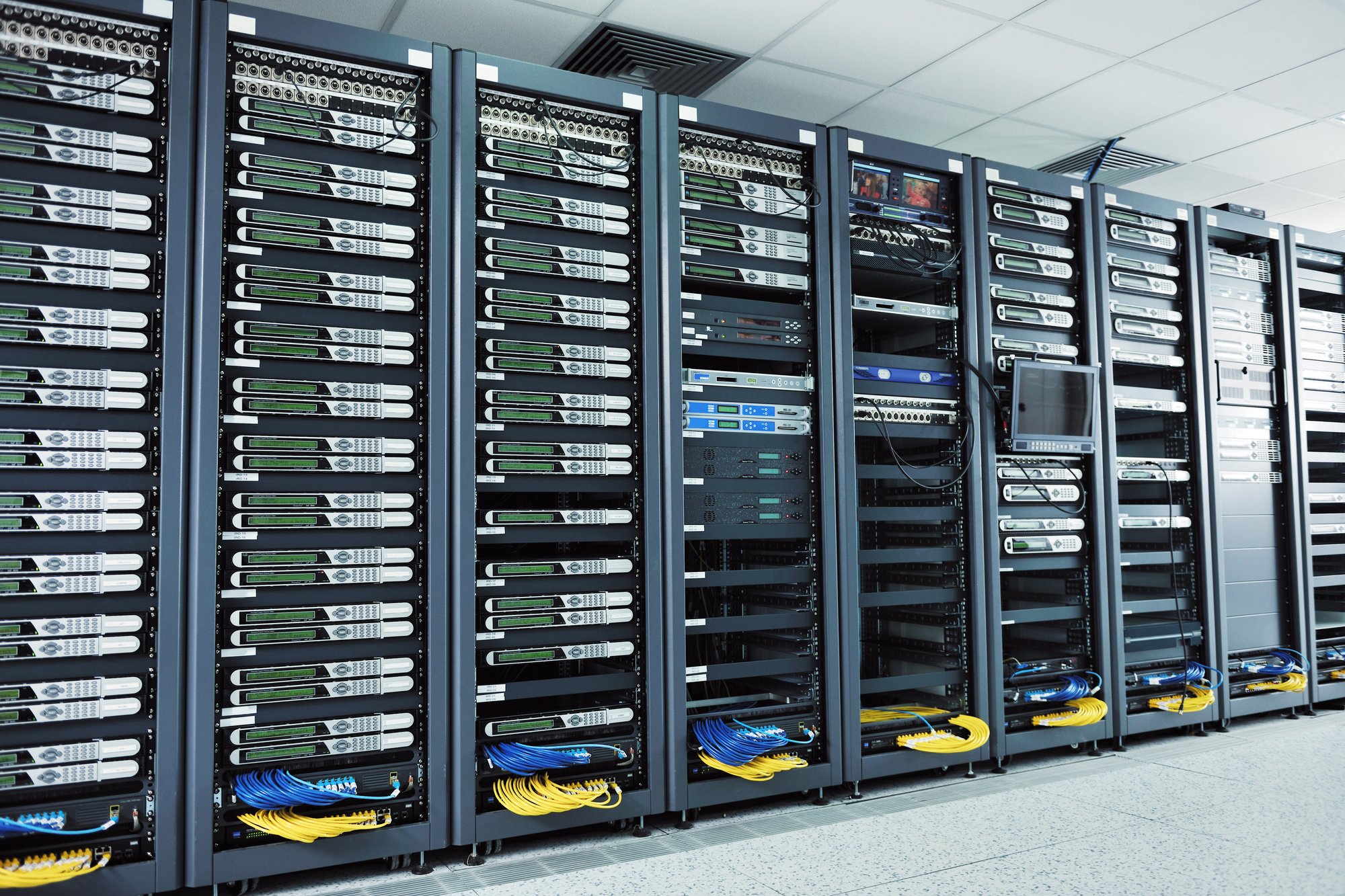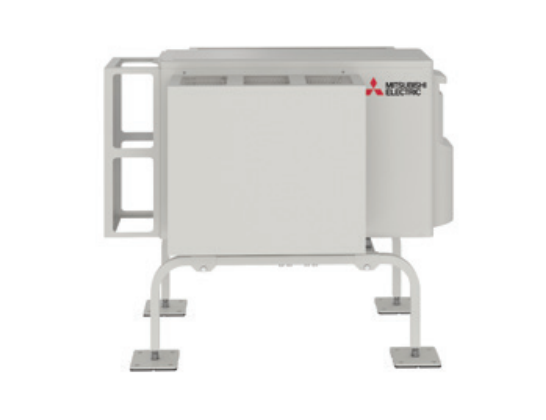Get Tech Tips
Subscribe to free tech tips.
Tips for Server Room Conditioning

Server rooms, sometimes called data rooms, are a somewhat unique situation in the HVAC trade with some special circumstances that should be considered. Here are a few tips for success when working on equipment for these spaces.
Note: this article is focused on smaller server rooms that may use conventional or mini-split-type forced air equipment. While these tips may apply to larger rooms that use engineered equipment with features like pressurized floors, direct rack ducting, fluid-cooled racks, dry coolers, or refrigerant-cooled racks, more in-depth knowledge of equipment and control strategy should be acquired before working on these rooms.
Because servers and data run 24 hours per day, 365 days per year, the cooling systems need to operate across the same time frame. If the cooling system fails in this space, the space will often warm up to a critical temperature in a very short time period. Server rooms are often located in the middle of buildings where there is no loss or gain to outdoors, so the load comes from electronic equipment within the room. Due to the typical interior location, opening a window to cool the space is not an option. Opening doors is also often not an option because servers or data connections need to be secure. For these reasons, 100% HVAC equipment uptime is critical.
The challenge with 100% uptime is something we all know, which is that mechanical equipment eventually fails or needs maintenance. Because of this, 100% equipment redundancy is necessary if the operator is serious about keeping their server equipment operating constantly.
Having worked in a number of server rooms without equipment redundancy, I've seen that failures often lead to rushed repairs, and temporary band-aids tend to become permanent until the next failure occurs. If you have a customer with a single source of conditioning in a room that is crucial to their business operation, I recommend having a conversation with them about what would happen to their business if their cooling equipment failed and their data equipment overheated. Remember, it’s their equipment and their choice; you are being paid to advise them on the realities of the marketplace with regard to repair time and parts availability.
Equipment Sizing
Equipment sizing is based on the heat output of all the equipment in the room operating at maximum capacity. Since the load from electronic equipment is fairly continuous compared to spaces that are affected by outdoor weather, and external humidity generally does not affect the space conditions, slight oversizing of equipment is not a large concern like it is in a space occupied by humans.
Lead/Lag Controllers
Lead/lag controllers operate as the interface between a single thermostat and two separate pieces of equipment. They will monitor the runtime on each system and rotate the lead equipment to attempt to get equal runtime on two separate conditioning systems. A lead/lag control will also monitor the room temperature independently of the setpoint thermostat and activate the lag system in the case of a failure on the lead system.
Humidity Control
ASHRAE recommends a range of 20-80% RH for server rooms. My typical target range is to operate in the 35-45% RH range, which is high enough to keep static electricity at a minimum but not significantly load the cooling system with humidity. Make sure to ask the operator about desired RH level, though, as some equipment may require different levels. Because of the constant cooling operation, most server rooms will need additional humidity to achieve these levels. One way to help with humidity control is to operate equipment at higher airflow across the evaporator, which raises the coil temperature and reduces the latent removal ability of the equipment.
Low-Ambient Controls

Credit: Mistubishi Electric Trane HVAC US (METUS)
Low-ambient controls are necessary components of server room equipment in any climate where the outdoor temperature falls below the indoor temperature. These controls keep the condenser saturation temperature high enough for proper operation. A fan speed controller is preferable over a fan cycling pressure controller on conventional equipment. Wind baffles may be necessary as well if the outdoor ambient gets much below freezing and the condenser is located in an area where wind is a factor. If an inverter unit like a mini-split is applied, make sure it is designed for low outdoor ambient operation.
Monitoring and Alarms
Automatic notifications that alert the operator of elevated temperatures, drain blockages, humidity levels, a switch to the lag equipment, or other potential failures are a good idea to implement. An alarm system allows the operator to be notified of a potential issue before a data equipment failure occurs. ASHRAE recommends server rooms be operated between 59-89ºF
Airflow Bounce-Back
If mini-split equipment is applied, make sure that the wall unit has room in front to discharge the air fully and not get “bounce-back” of discharge air into the return. Bounce-back of supply air can cause the equipment to turn off before the room is fully cooled.
Portable System
In the case of a small room where the customer does not want to have automatic redundancy, having portable equipment on-site that the operator can set up easily is an option. One place I worked had intake and discharge ducts installed for a self-contained portable unit that was stored in another room, which could be connected and operating in less than 20 minutes if their primary equipment failed. If this option is used, a location to discharge any condensate water is necessary.
—Eric Kaiser











Comments
Hi Eric, I appreciate your attempt at serving the public good in this article on CRAC design approaches. However, I’d like to open up a discussion to address the following points: 1) mini-splits do not control humidity 2) mini-splits are not a professional solution to a constant load application 3) According to many server OEMs, operating temperatures can be in a range up to 104F. 4) Practical humidity control starts with the thermal envelope 5) ASHRAE is not the authority on Data Center environmental control but a reference. 5) Mini-splits and VRF are designed for human comfort applications only 6) Server OEMs operating condition RH is up to 80%, search “Evaporative Cooling for data centers+Oregon”
Hi Eric, I appreciate your attempt at serving the public good in this article on CRAC design approaches. However, I’d like to open up a discussion to address the following points: 1) mini-splits do not control humidity 2) mini-splits are not a professional solution to a constant load application 3) According to many server OEMs, operating temperatures can be in a range up to 104F. 4) Practical humidity control starts with the thermal envelope 5) ASHRAE is not the authority on Data Center environmental control but a reference. 5) Mini-splits and VRF are designed for human comfort applications only 6) Server OEMs operating condition RH is up to 80%, search “Evaporative Cooling for data centers+Oregon”
To leave a comment, you need to log in.
Log In